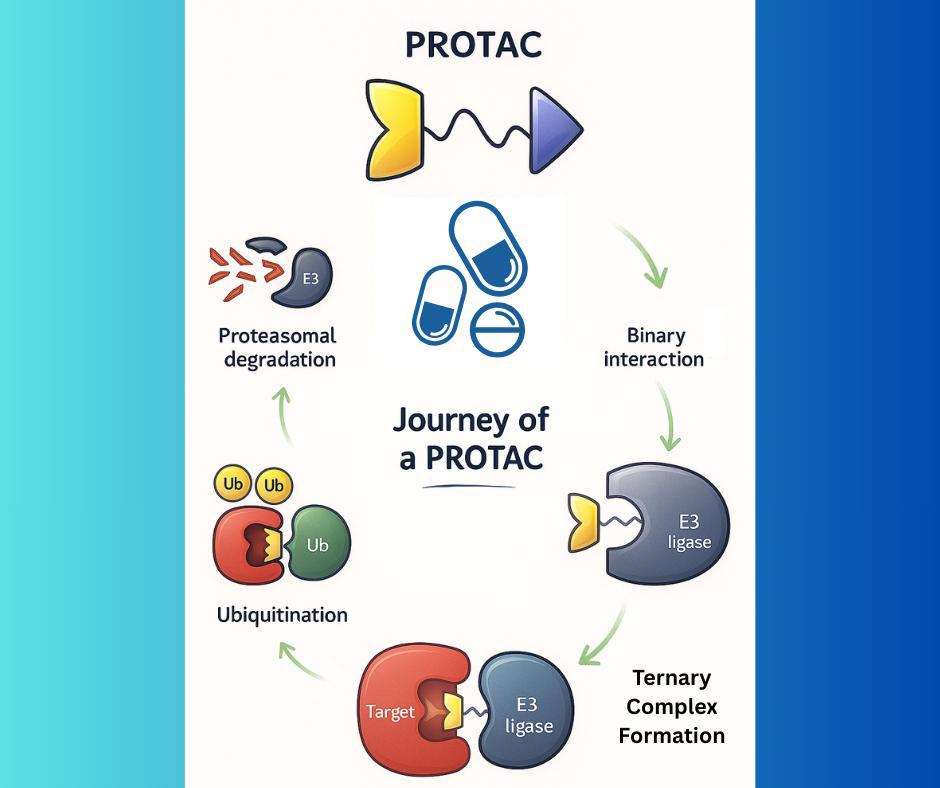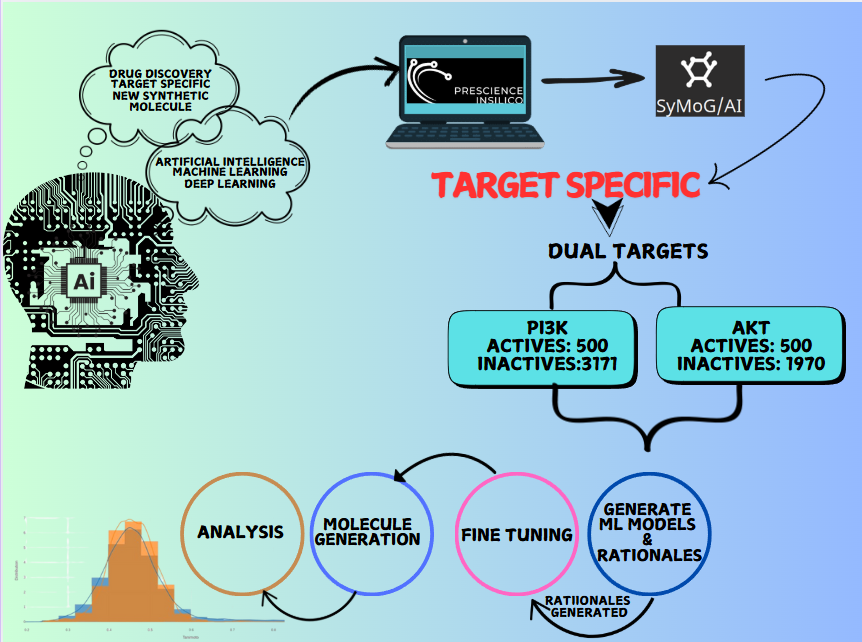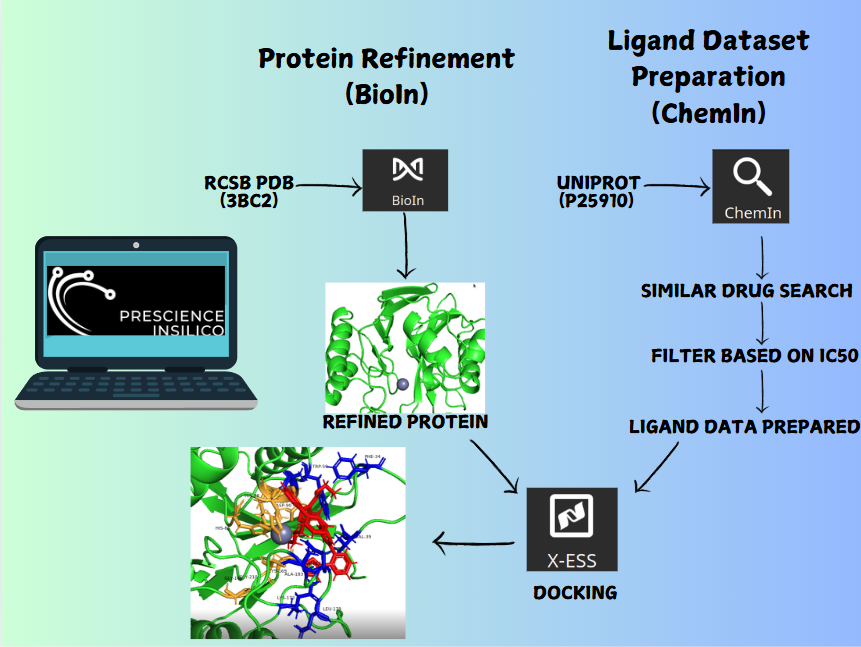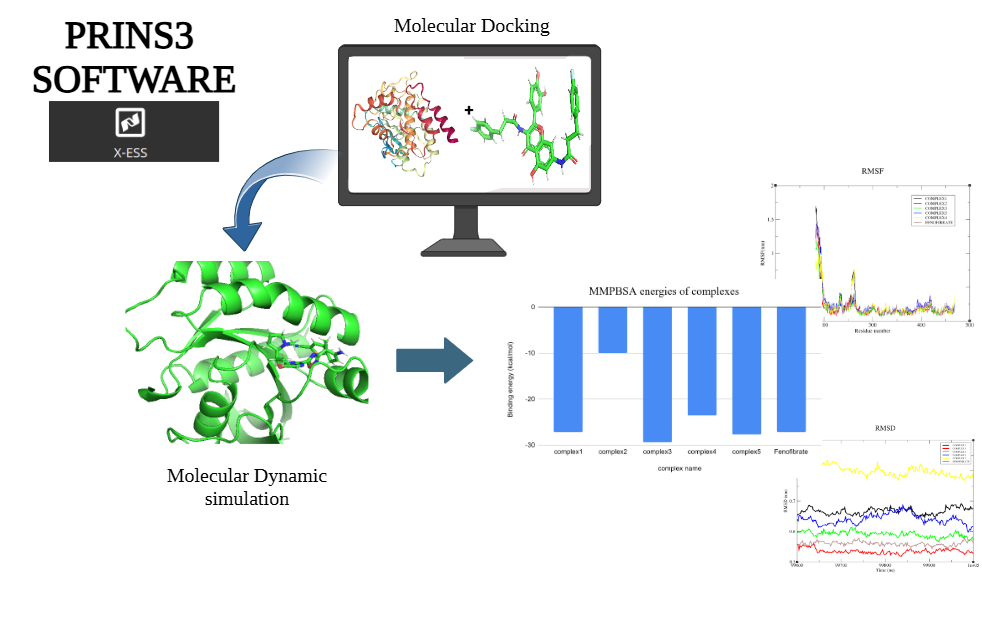Accelerating PROTAC Drug Discovery with the PRinS3 Platform

The field of drug discovery is undergoing a transformative shift with the rise of PROTACs (Proteolysis Targeting Chimeras). These innovative bifunctional molecules offer a novel approach to selectively degrade disease-causing proteins, unlocking therapeutic possibilities for targets previously considered “undruggable.” As PROTAC technology gains momentum, Prescience Insilico is preparing to integrate PROTAC design into its cutting-edge computational platform, PRinS3, to accelerate the development of next-generation targeted therapies.
PROTACs consist of two linked components: one binds the target protein, while the other recruits an E3 ubiquitin ligase, a key player in the cell’s protein degradation system. This dual mechanism tags the target protein for destruction by the proteasome, effectively removing it from the cell. Unlike traditional inhibitors that temporarily block protein activity, PROTACs induce permanent degradation, potentially leading to more durable therapeutic effects.
This unique mode of action enables PROTACs to:
- Target proteins lacking conventional druggable pockets
- Overcome resistance mechanisms that limit inhibitor efficacy
- Reduce side effects by enabling lower dosing
The ability to selectively degrade proteins offers significant advantages in treating complex diseases such as cancer, neurodegenerative disorders, and autoimmune conditions. For example, many oncogenic proteins driving tumour growth are difficult to inhibit with small molecules, but PROTACs can target these proteins for destruction, opening new avenues for cancer therapy. Moreover, PROTACs can be engineered to simultaneously target multiple proteins or pathways, addressing multifactorial disease mechanisms.
Despite their promise, PROTACs face several challenges. A major hurdle is the selection of E3 ligases: although hundreds exist in human cells, only a few have been exploited for PROTAC design. Discovering new ligases with tissue-specific expression could improve selectivity and reduce off-target effects. Additionally, PROTACs’ relatively large molecular size often compromises cell permeability and pharmacokinetics, impacting bioavailability. Careful optimisation of the chemical linker connecting the two functional parts is also critical, as it must enable effective proximity between the target protein and E3 ligase to facilitate degradation.
Computational tools and advanced simulations play a vital role in overcoming these challenges by predicting optimal PROTAC structures and interactions. PRinS3, Prescience Insilico’s AI-driven drug discovery platform, is set to incorporate PROTAC design capabilities. Leveraging multi-cloud and quantum computing resources, PRinS3 aims to simulate complex PROTAC-target interactions with high precision.
The PROTAC development workflow on PRinS3 involves:
- Protein Refinement (BioIn): Starting with the raw target protein structure from the Protein Data Bank, BioIn removes crystallisation artefacts and unwanted chains, adds missing residues and side chains, producing a refined structure ready for docking.
- Warhead and Linker Selection (ChemIn): ChemIn screens and selects optimal warheads and linkers based on input chemical structure and chemical properties, aided by ChemSketch for molecular design.
- Synthesis of New Molecules (SyMoG): SyMoG employs AI to generate novel linker and warhead variants, clustering and filtering them for drug-likeness and synthetic feasibility, creating a diverse library of PROTAC candidates.
- Molecular Docking and MD Simulation (X-HTVS & X-ESS): The PROTAC library undergoes high-throughput multi-target virtual screening with X-HTVS, followed by detailed docking and molecular dynamics simulations via X-ESS to assess binding stability and interaction profiles.
- Ternary Complex Formation (Off-platform): Top candidates are further evaluated through experimental or specialised computational modelling of the ternary complex involving the protein of interest, the PROTAC, and the recruited E3 ligase, validating their degradation potential.
By integrating these modules, PRinS3 offers a comprehensive, AI-powered solution to accelerate PROTAC discovery, paving the way for innovative therapies targeting challenging proteins. Complete details about these applications can be found on our official website at https://prescience.in/. To obtain access to the platform and obtain all the information required for the best possible experience, we respectfully ask that you contact us by email at support@prescience.in and obtain information at https://prescience.in/prins3/.




